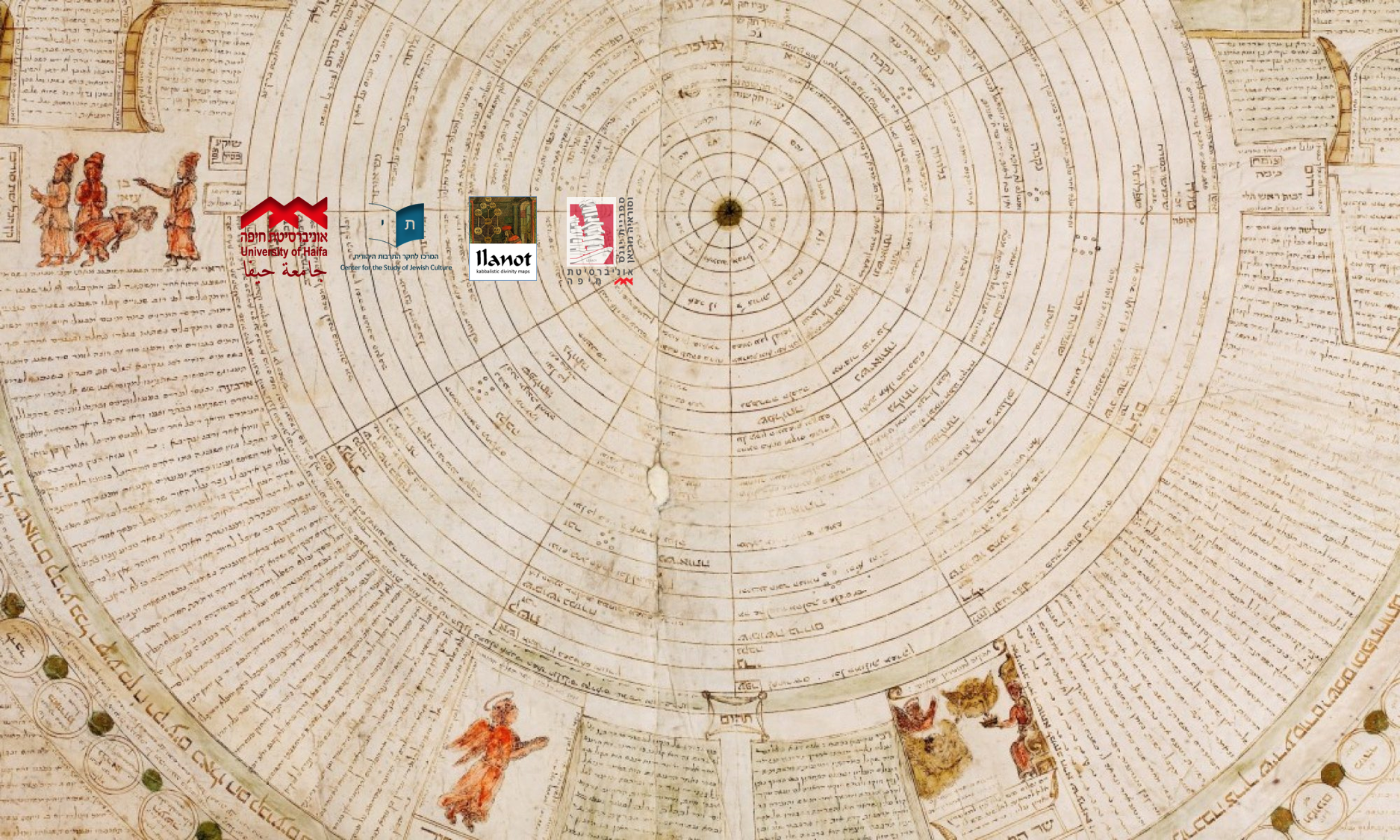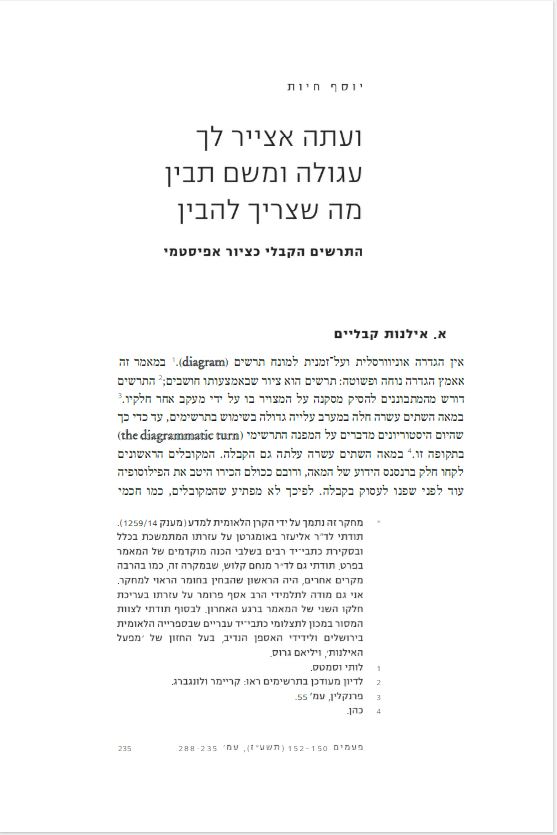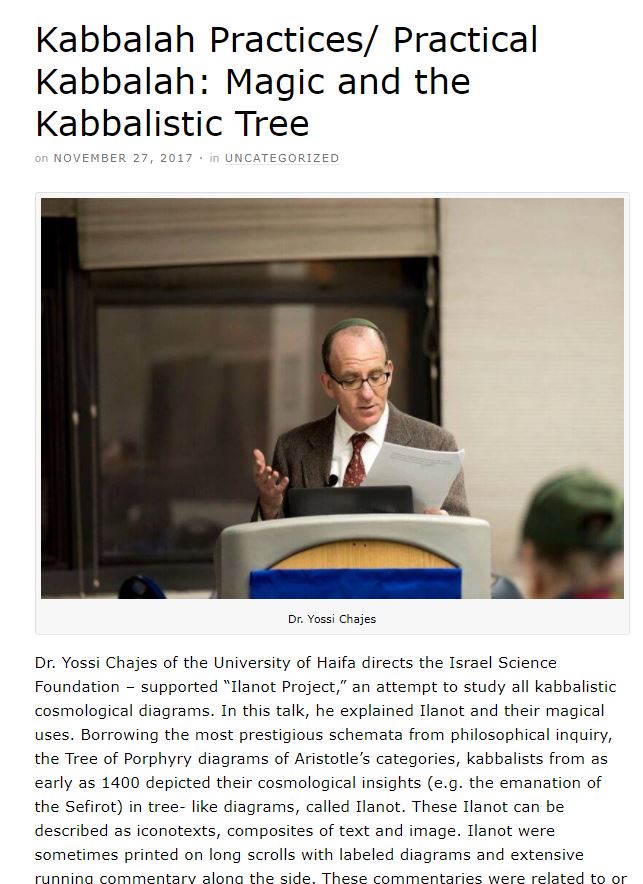J.H. Chajes, “Kabbalistic Diagram as Epistemic Image,” Pe’amim 150-152 (2018): 235-288 (Hebrew)
Prophecy, Kabbala and Visualization of knowledge in the thought of R. Moshe Chaim Luzzatto
הנה עין הנביא ידמה: נבואה, קבלה ודימוי חזותי אצל רמח”ל
המאמר עוסק בתפקידם של שני ‘אילנות קבלה’ אותם יצר רמח”ל (ר’ משה חיים לוצאטו). המאמר בוחן את תפקידה המרכזית של הוויזואליה בתוך עולמו ההגותי של רמח”ל, תוך הצגת האילנות כחלק מתמונה רחבה של תפקיד הוויזואליה בשיח הקבלי בכלל והשבתאי בפרט בתקופה זו. רמח”ל מציב במרכז הפעילות הקבלית את המקובל ה’רואה’ את העולמות העליונים, ומולו את המקובלים אשר מנסים לשחזר ראייה זו. פעולת השחזור נעשית בעזרת פרשנות, או בעזרת הממד הוויזואלי של האילן הקבלי. דבר זה מסביר גיצד האילן משמש ככלי לפעילות קבלית-נבואית, ואת השיח סביב הגשמת האל שהתפתח בחוגו של רמח”ל.
This article deals with the important role of two kabbalistic diagrams (Ilanot) that were created by R. Moshe Chaim Luzzatto (Ramchal) at the beginning of the eighteenth century. The Ilanot are examined within the context of a treatment of visualization in Ramchal’s intellectual world and, more broadly, in the kabbalistic literature in this period, including Sabbatean works. At the center of kabbalistic activity, Ramchal posits the kabbalist who “sees” the upper worlds; alongside to him are the kabbalists who attempt to reconstruct this vision. This reconstruction is facilitated by commentary, as well as by the visualization inscribed in the Ilan. In this way we may understand how the Ilan served as a tool for kabbalistic-prophetic activity, as well as the discourse of divine corporealization that developed in the circle of Luzzatto.
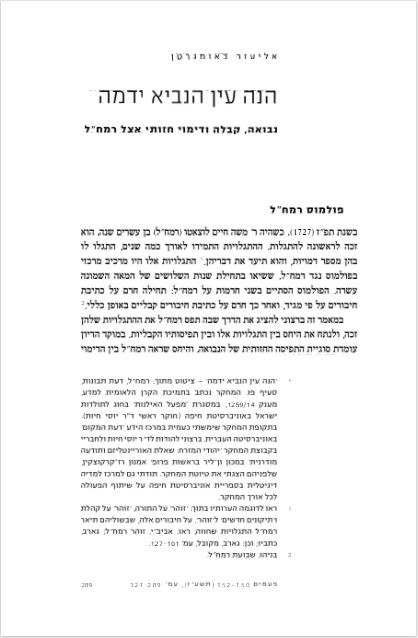
Kabbalah Practices/ Practical Kabbalah: Magic and the Kabbalistic Tree
Kabbalah Practices/Practical Kabbalah: Magic and the Kabbalistic Tree – Dr. Yossi Chajes
Dr. Yossi Chajes of the University of Haifa directs the Israel Science Foundation – supported “Ilanot Project,” an attempt to study all kabbalistic cosmological diagrams. In this talk, he explained Ilanot and their magical uses.
הקבלה בתימן במאה ה17 – דרכי עיצוב קבלה מקומית בעולם גלובלי
הרצאתו של ד”ר אליעזר באומגרטן – הקונגרס העולמי למדעי היהדות
מושב פוסטרים – הקונגרס העולמי למדעי היהדות
The Ilanot Project comes to New Jersey! Joshua Trachtenberg Memorial Lecture
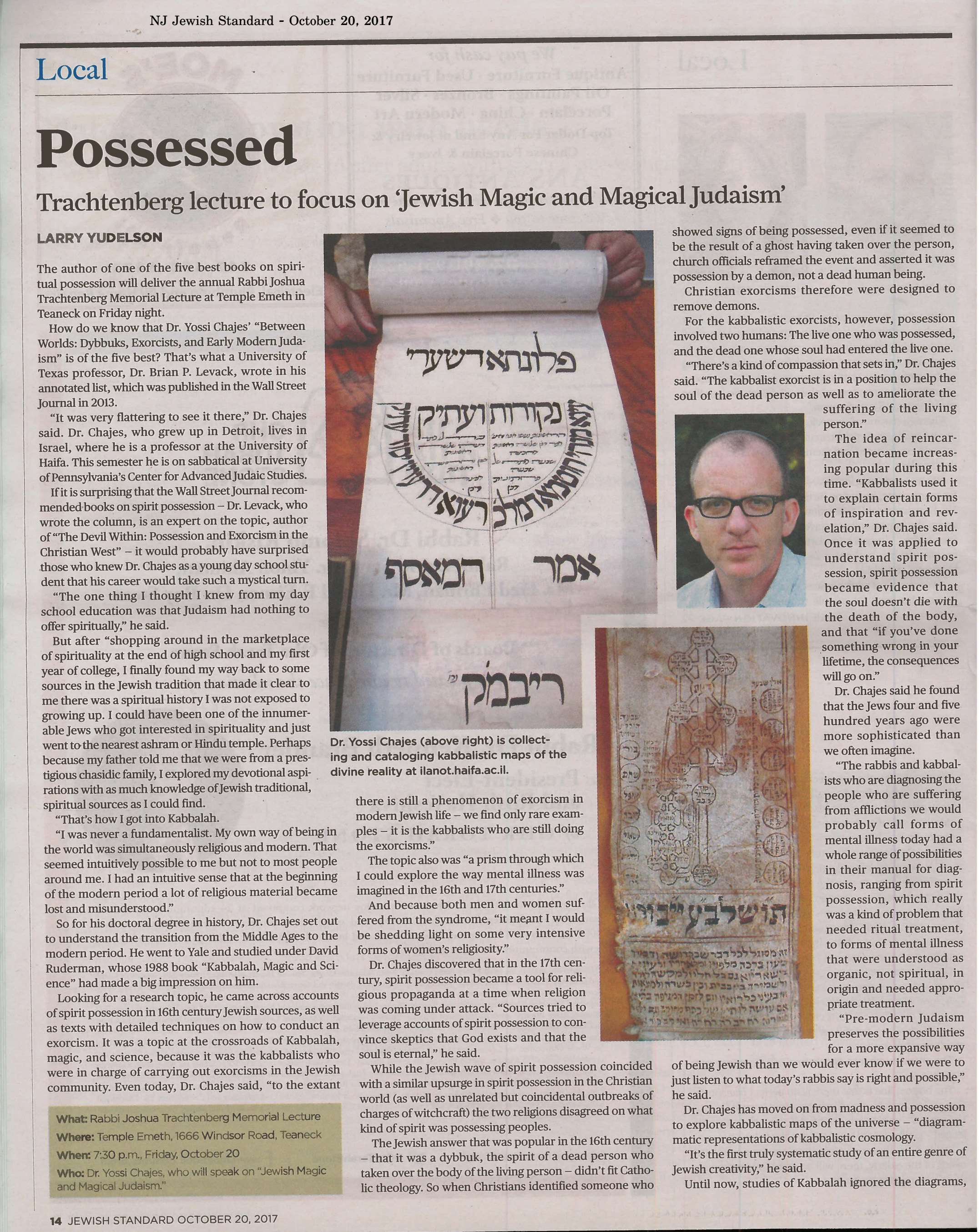

CUL, Mac Pro, 10.6.7, Better Light 8K-2, Viewfinder 7.4.4, HID, TTI 45ei, Rodenstock 90mm/f5.6, ColorChecker
Durchlässige Grenzen: Die Visualisierung Gottes zwischen jüdischer und christlicher Kabbala bei Knorr von Rosenroth und van Helmont – J. H. ChaJes
Drashot ‘al ha-ilan ha-kabbali le-Yosef ibn-Zur
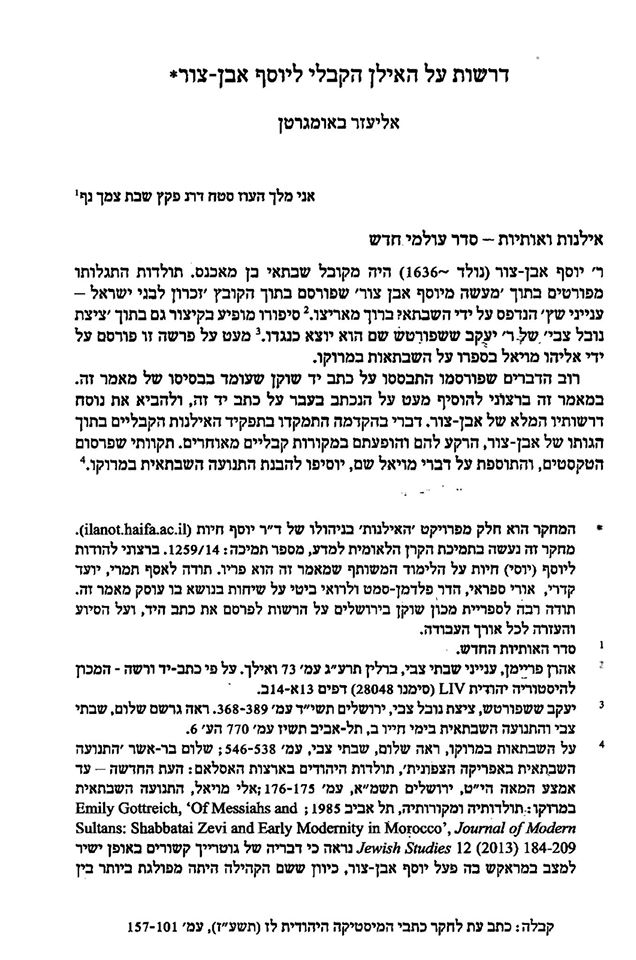
Continue reading “Drashot ‘al ha-ilan ha-kabbali le-Yosef ibn-Zur”
The Ilanot Project: First Stop on the Kabbalah Tour of Israel
Independence Day, 5777/2017 – Ein Zur, Northern Israel
Under the shade of the willows in this beautiful archeological site, beside a spring said to have been flowing without interruption for millennia, we unfurled some of the great scrolls…. Rabbi Dr. Orna Triguboff, the noted Australian Kabbalah teacher, had kicked off her “Kabbalah Tour of Israel” with a morning lecture to her enthusiastic and engaged group on the Sefirot, followed by a hike in Ramat haNadiv…that led them directly to our beautiful meeting spot.

No PowerPoint out in the wild, but I had three full-size reproductions that made for über show-and-tell. After a thrilling introduction, we examined Oxford – Bodleian Library MS Hunt. Add. E. (MS 2429) – a stunning sixteenth-century scroll that presents a simple, yet colorful iconic kabbalistic tree. There was much that even the novices could appreciate in this diagrammatic scroll — from the colored sefirotic hubs inscribed with divine names, to the amusing inscription testifying that the copyist was none other than a Christian (and a Scotsman no less!), James Hepburn (here going by the name Yaakov Hevron).
After that warm-up, they were treated to another jewel in Oxford’s collection: Oxford MS 1949. First designed and drafted in early sixteenth-century Renaissance Italy, this extraordinary scroll is one of roughly a dozen copies known to us today. Others are in the Vatican, Hebrew Union College, the British Library, and in other libraries and private collection around the world. (Our patron saint, William Gross, has a fragment of a copy in his collection, which serves as the image on the homepage of this site.) Oxford 1949 is a long parchment scroll – approaching three meters – about two-thirds of which present an ornately drawn Tree in its most common variation (with the three topmost Sefirot arranged one atop another rather than triangulated). This Tree literally “sits” on a depiction of the Throne of Glory that is atop the bottom third of the scroll. This bottom portion presents the Ptolemaic cosmos with earth centered in the middle, the elements beneath the lunar sphere, the planetary orbs, the astrological constellations and fixed stars, before final reaching literally the edge of the heavenly bodies. At the very top of the circles, we see an opening — from the heavens to the heaven of heavens — with its gatekeepers the Kruvim. Keeping the Lion-Eagle-Ox-Man Kruv company is Rabbi Akiva, the one who successfully entered and exited the Pardes/Orchard. Here too the scroll, for all of its complexity, provided plenty of interest for these Kabbalah students of varied backgrounds.
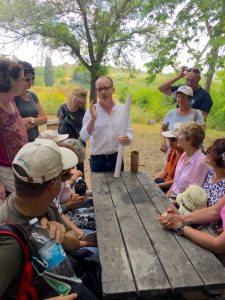
As something of a grand finale and shocker, I ended with the mind-bending Hammerschlag Scroll (Munich Cod.Hebr. 450): the Ilan of Adam Kadmon. This shocker of an Ilan is a unicum Lurianic scroll, full of intricate sub-diagrams, but the real interest is in the representation of Adam Kadmon: this anthropomorphic godhead is a Habsburg emperor, complete with the crown fashioned for Rudolf II, Holy Roman Emperor. I will never forget the moment when I realized that Adam Kadmon in fact bore a striking resemblance to Leopold I, who was Holy Roman Emperor when Nossen Neta Hammerschlag created his marvelous scroll. Talk about Habsburg loving Jews!
One of the take-aways from this gathering was the extent to which interested people of varied backgrounds can be inspired and engaged by the Ilanot. We are busy advancing our efforts to implement cutting-edge technologies in the digital humanities, but we also need to think about how to make our work accessible to the larger public. Getting our work out there, “popularizing” it, is not something that we can get Israel Science Foundation funding to accomplish — though we do thank the ISF for providing funding for our current research (grant 1259/14). Private foundations and contributors will be essential to accomplishing these goals. To share your thoughts and suggestions, and to get info on how to make tax-deductible contributions to the Ilanot Project, please be in touch!

